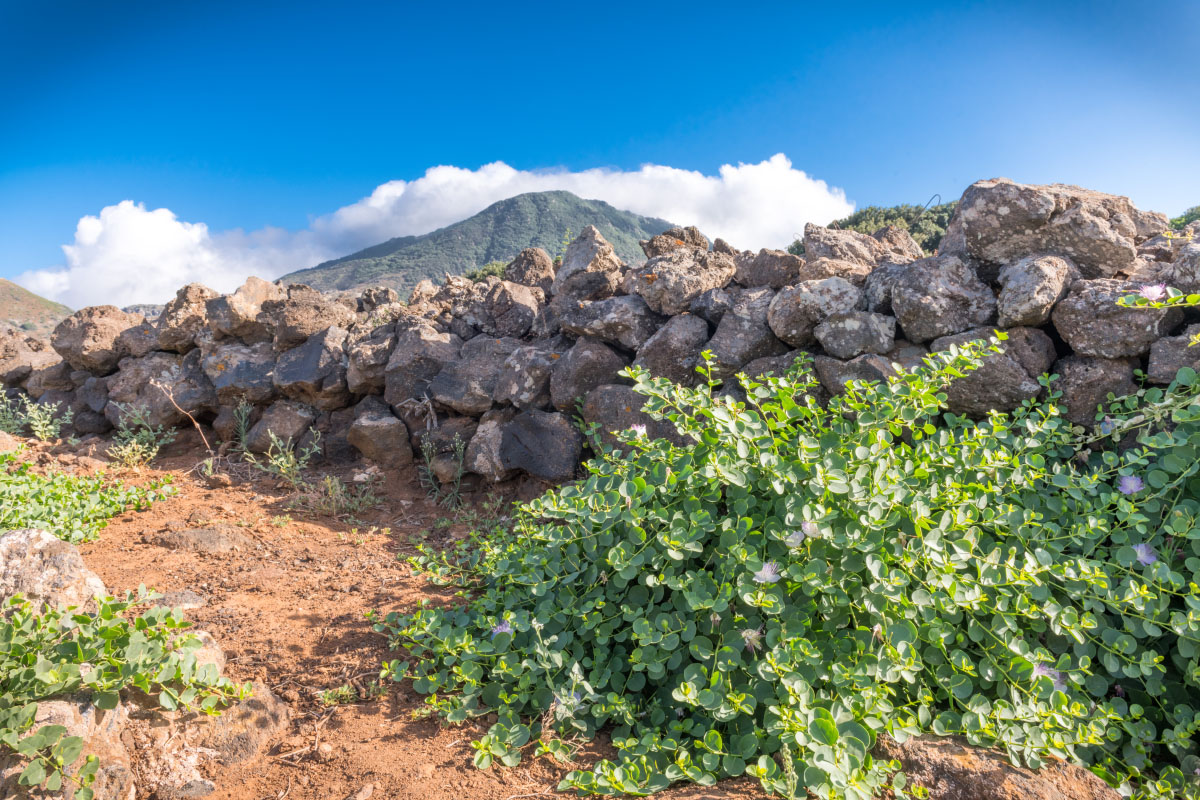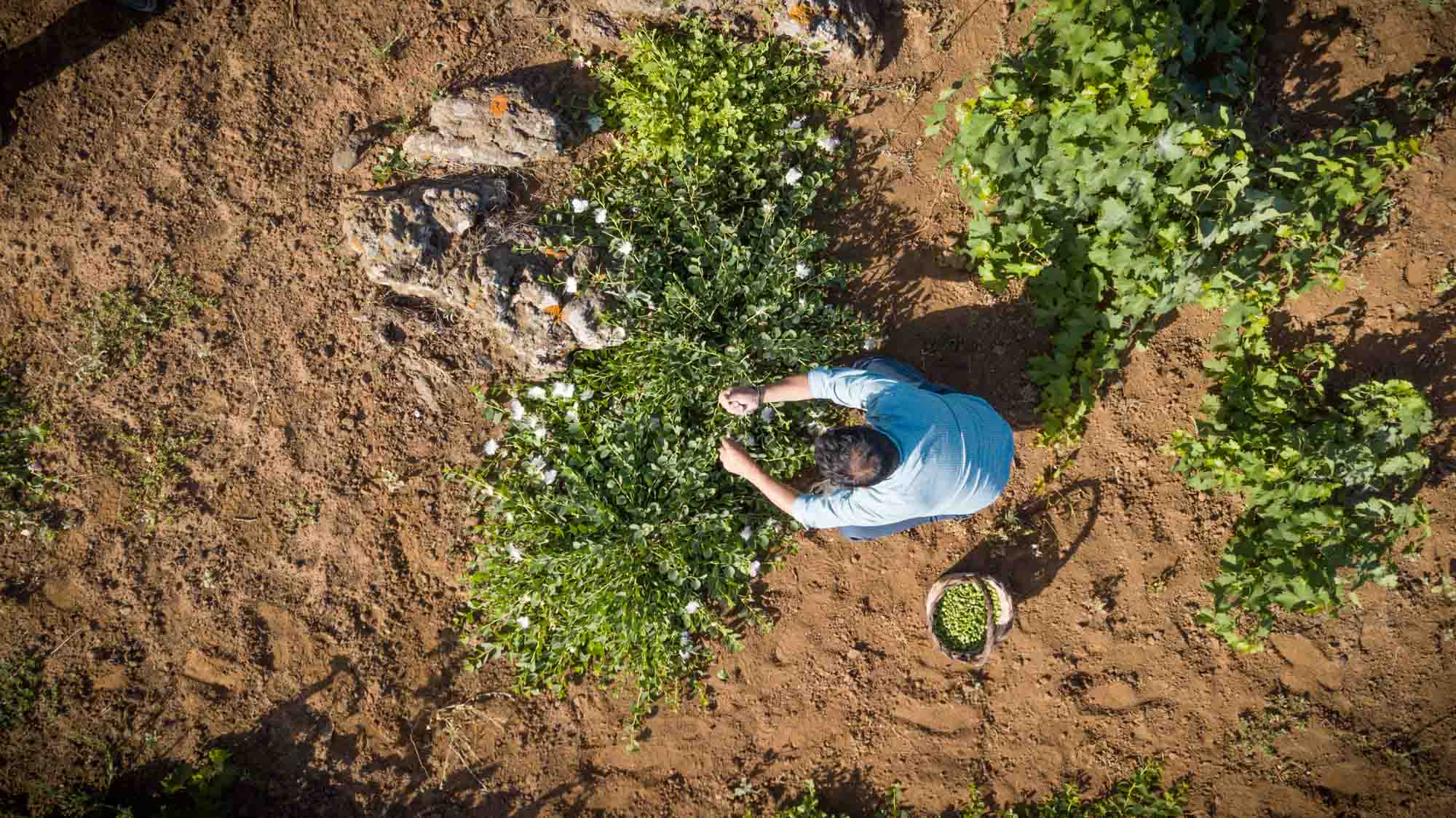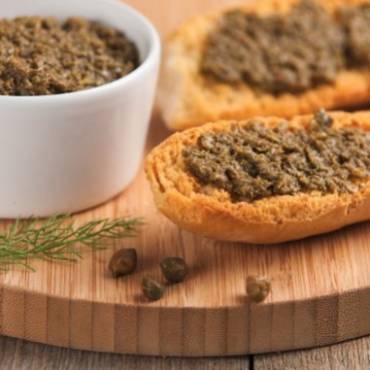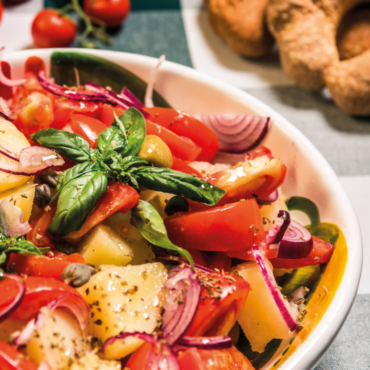THE CAPPERO PLANT
The caper is a product originating from North Africa and some areas of central-southern Asia imported by the Arabs in the Mediterranean where it spreads in areas with a warm climate. In Italy about 95% of caper production takes place in the islands of Pantelleria and Salina.
The caper is a low plant that has a long root from which many long, supple and hanging stems branch out. Its leaves, green tending to mustard, are alternate, rounded and with a fleshy consistency. The flowers, which have four rounded petals and four round sepals, must be collected when they are not yet opened buds. If they are not collected they open towards evening and the next morning they begin to wither giving life to the fruit, the cucuncio: a dark green and oblong-shaped berry which, once ripe, opens up showing a large number of almost black seeds.
The plant does not require fertile or wet soils, it is satisfied with dry and sunny places. This is why we find it luxuriant in arid areas, on dry stone walls, in the cracks of a rock or an old building.

PANTELLERIA CAPER
Pantelleria, with its volcanic soil and the presence of particularly favorable climatic conditions, offers an ideal microclimate for the development of the caper plant. The Pantelleria caper is distinguished from any other by the particularly strong and persistent aromatic smell, the intense flavor enhanced by the sea salt, the globular shape, the compact consistency and the green color tending to mustard.
The plant is widespread on the island both as a vegetation that grows spontaneously almost everywhere and as an element that strongly characterizes the rural landscape close to the typical dry-stone walls. The cultivation extends over a total area of approximately 100 hectares.
The production of capers is traditionally carried out by small family businesses, within which the entire production cycle is carried out: cultivation, harvesting and salting. It is a demanding process that cannot at any stage resort to the help of mechanical means.
THE PHASES OF PRODUCTION: THE CHOICE OF SOIL AND CULTIVATION
The farmers are handed down from generation to generation the practices related to the cultivation of the caper that begins with the choice of the plants, the most exposed to the sun and with the planting. The planted soil must be worked and fertilized in winter while the plants must be pruned with a certain frequency and reach full production after about three years from the plant.

THE PHASES OF THE COLLECTION
The collection of capers is certainly the most challenging phase. It takes place in successive waves, spaced from ten days between one harvest and another, in the period from May to October. It is essential that it takes place during the warmer hours of the day: at dawn, before sunrise, or during the late afternoon light hours. These are the hours in which the consistency of the precious buds is not affected by the high temperatures that occur during the day and are also the least hot hours for the farmer and his family who are able to sustain the fatigue of maintaining a long curved position imposed by the plant that grazes the ground.
There is no sudden caper picking, and this constitutes a further element of difficulty in finding labor. The collection requires dexterity and a particular manual skill, which children acquire by following their parents from an early age. The movements, which follow the progression of the stems from the radical collar to the tips, must be fast but also delicate so as not to damage the branches and subsequent harvests. In the absence of a quick manual the volume of the minute buds, which correspond to long and tiring hours of work, is paltry.

CAPPERO PROCESSING
After harvesting the buds are placed in vats where the mass of capers, to which sea salt is added in a proportion corresponding to 30-40% of its weight, is stirred in order to favor the lactic fermentation which gives the particular organoleptic characteristics.
After about 10 days the vegetation water produced by salting is eliminated. During this phase of slow maturation in brine the capers acquire their most valuable qualities: aroma, consistency, fragrance, taste. After this brine the capers are drained and placed in another vat, always with coarse sea salt, but this time in the measure of 20-25% of the weight of the mass and subjected again to mixing for another 10 days. After the second brine period has elapsed the maturation is complete and the capers are ready to be consumed.
The conservation of the product with sea salt is a fundamental guarantee of quality for the consumer. The use of storage in vinegar, which flavor the taste of camouflage, is in fact a device usually used to market low quality capers.
USE AND CONSERVATION OF THE CAPPERO
Before using the capers in the kitchen, small tricks are needed that allow you to fully appreciate the taste. They must be washed with running water in order to eliminate the salt of preservation and if they maintain a taste that is still salty, and little appreciated, they can be left for about an hour in a bowl of water. Then they are ready for use. To preserve the capers, if they have been purchased in a bag packaging, simply transfer them with the salt to a glass jar and close them with the screw cap, so that they do not lose moisture, drying out. Thus preserved, the Pantelleria capers last for several years while maintaining their quality.

IGP CAPERS
The Capers of Pantelleria are the only ones that are recognized as being of superior quality both by the Italian Ministry of Food Resources (decree 2 December 1993, published in GURIN302 of 12/27/1993) and by the European Union (reg. EC No. 1107 / 96, published in GUCE L148 / 96 of 21/06/1996). They can boast the protected geographical indication (I.G.P.) which is the DOC mark for crop production. It is a widely used instrument affecting 70-80% of the entire island production, which is around 1500/2000 quintals.



